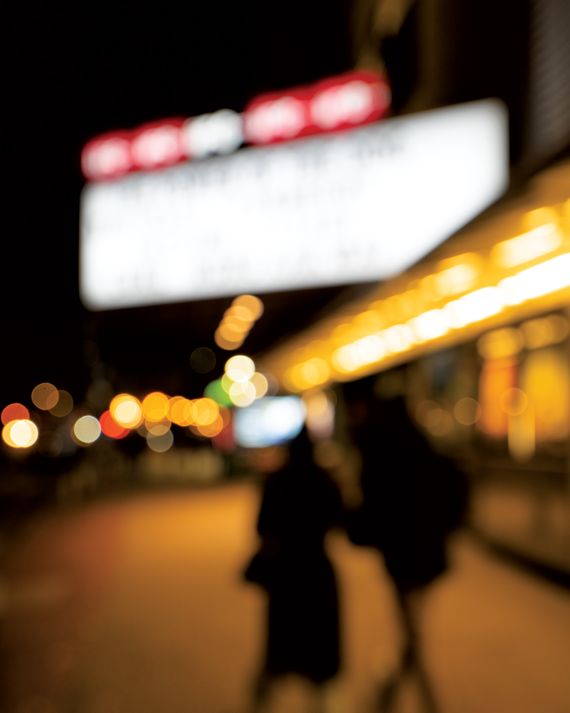
Oscar season in New York is always packed with sentimental movie galas, but it’s safe to say the November premiere of Steven Spielberg’s West Side Story was more emotional than most. The film had been sitting on a shelf, waiting to meet its public for a whole year (its initial release date had been December 18, 2020), and the original show’s lyricist, Stephen Sondheim, had died three days before. As Spielberg took the Rose Theater stage at Lincoln Center to pay tribute to his legendary friend and colleague and introduce his film, he prefaced his remarks by thanking Bob Iger, the former CEO of Disney (the parent company of 20th Century Studios), for deciding not to release the film on Disney+ and to wait until it could safely open in theaters.
This was far from the most notable moment of his speech; most outlets that covered his remarks didn’t even mention it. Maybe that’s what was so notable about it. Yes, there was a new variant on the horizon. Yes, the audience that night had been both vaccinated and tested. And yes, the domestic box office was still a shadow of its former self. But a big New York movie was playing on a big New York screen to a big New York audience, and, at least for a moment, it all made perfect sense. A city and its movies were roaring back to life.
And appropriately so. Because New York is where the movies were born and reborn — and where they almost died, over and over again. It’s where film was projected to the public for the first time and where most of the first movie studios were formed, from Biograph in the Bronx to Vitagraph on Nassau Street. The early years of cinema often meant breathtaking glimpses of the awesome city rapidly growing around these nascent filmmaking operations: an army of workmen digging the foundation of a skyscraper, a parade of officials inaugurating the Williamsburg Bridge, a shipload of immigrants arriving at Ellis Island. New York captured the cinematic imagination long before Fritz Lang paid it a visit and dreamed up a city of the future he called Metropolis.
New York and its environs were the center of the filmmaking world before the studios started migrating west in search of cheaper space, more light, and better sound. But even after they departed, they never left spiritually, continuing to make use of the city’s deep pool of actors, writers, and subjects. Look at the golden age of Hollywood, when nearly all production was taking place in and around Los Angeles, and see how many films were still set in “New York” — a dreamland twinkling through painted soundstage windows or looming in the shadows of cleverly lit back lots.
When productions did return to the city in the late 1940s and ’50s, they found something different from a dreamland but no less dramatic. Lighter, faster cameras made shooting on streets and rooftops possible. A burgeoning independent movement — fed by the international cinema on movie screens, the art world rising downtown, and the underground films showing in basements around the city — forged a grittier aesthetic that, in turn, transformed the mainstream and saved a moribund Hollywood. Just as the “Movie Brat” generation of directors (Scorsese, Coppola, and De Palma among them) were revitalizing American cinema in the ’70s, much of New York was falling into disrepair and chaos, making it an even more compelling cinematic subject.
The fate of the city and the fate of cinema seem inextricably, almost mystically, intertwined. After the 9/11 attacks, many wondered if we would ever feel safe gathering in theaters again. Those in the industry wondered if any crew would ever feel safe shooting in New York. By 2006, film and TV production in the city had reached an all-time high. New York was one of the first U.S. cities to close theaters when the pandemic hit. This time, the public-health menace was real, but it came at a time when the world was beginning to wonder if the theatrical experience was dead. Sure enough, within months, any number of neo-futurist nabobs (some probably ensconced comfortably in their summer homes) were claiming the new normal of streaming would henceforth be the forever normal, with all of us affixed to our couches happily consuming digital content for the rest of our lives. Such a future would not only have dealt a death blow to cinema; it would have dealt a death blow to the city, where people come to be around others. And, let’s face it, it would have sucked.
We decided to make this year’s edition of “Reasons to Love New York” a love letter to the movies and to the way the city shapes and is shaped by them. One of the immortal films about New York (No. 33 on our list of the 101 best New York movies) is King Vidor’s silent melodrama The Crowd. When you think about it, that title could belong to just about any film about the city. No matter the subject, nearly all New York movies — whether Taxi Driver, Paris Is Burning, either version of West Side Story — seem to be on some level about the peculiar drama of finding oneself alone among the masses. New York is at once the loneliest city and the most crowded. And doesn’t that apply to movie-going as well? We sit in darkened rooms, sharing space with strangers, having an experience that is collective yet intimate, cloistered yet spectacular. If the crowd went away — as it sometimes does, as it did last year — cinema would cease to be cinema, and New York would cease to be New York.
Reasons to Love New York
‘New York’ Magazine celebrates the city’s timeless, peerless connection to movies.


